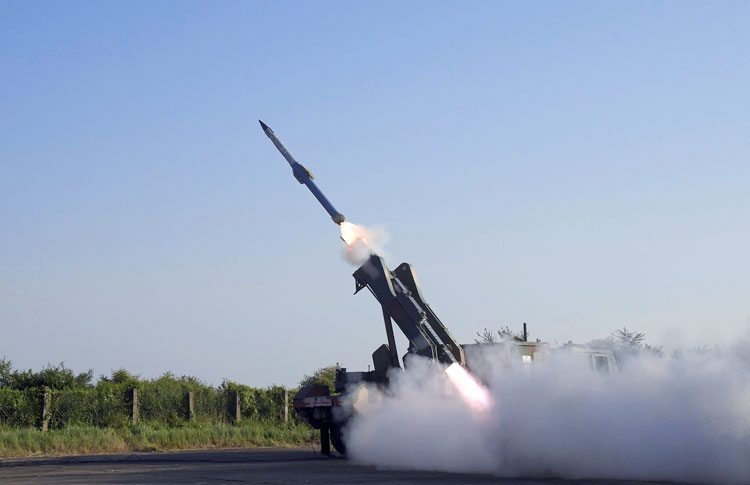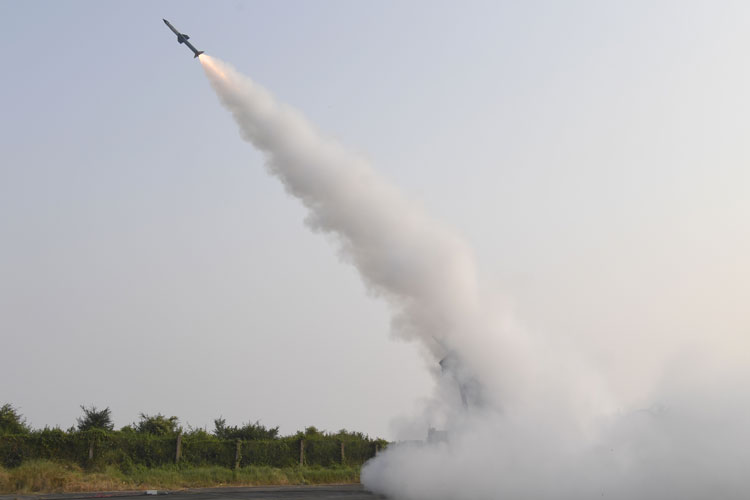INDIAN ARMED FORCES CHIEFS ON OUR RELENTLESS AND FOCUSED PUBLISHING EFFORTS

The insightful articles, inspiring narrations and analytical perspectives presented by the Editorial Team, establish an alluring connect with the reader. My compliments and best wishes to SP Guide Publications.

"Over the past 60 years, the growth of SP Guide Publications has mirrored the rising stature of Indian Navy. Its well-researched and informative magazines on Defence and Aerospace sector have served to shape an educated opinion of our military personnel, policy makers and the public alike. I wish SP's Publication team continued success, fair winds and following seas in all future endeavour!"

Since, its inception in 1964, SP Guide Publications has consistently demonstrated commitment to high-quality journalism in the aerospace and defence sectors, earning a well-deserved reputation as Asia's largest media house in this domain. I wish SP Guide Publications continued success in its pursuit of excellence.
- MoD initiates comprehensive review of Defence Acquisition Procedure 2020, pushes for defence reforms
- G7: The Swansong
- Kalinga Connect: South Asia to Polynesia
- Must Credit DRDO for Operation Sindoor, now what is next for defence R&D?
- The layered Air Defence systems that worked superbly, the key element of Operation Sindoor
- Operation Sindoor | Day 2 DGMOs Briefing
- Operation Sindoor: Resolute yet Restrained
Indigenous QRSAM – Induction 2021
 |
The Author is Former Director General of Information Systems and A Special Forces Veteran, Indian Army |

The indigenous Quick Reaction Surface to Air Missile (QRSAM) developed by the Defence Research and Development Organisation (DRDO) is slated go for production in 2021 after completing user trials over the next six months. The media quoted a DRDO official saying, “The QRSAM is the country’s first indigenous mobile air defence system and meant for the Army’s Strike Corps to be mobile on vehicles. The development activity is complete and preparations are on for user trials. The Defence Acquisition Council has given conditional approval. In the next six months we want to finish user trials and by next year we will be ready for production.” Under Chapter 4 of the new Defence Acquisition Procedure (DAP) 2020, if items are developed by a production agency there are single-stage user trials, which will further speed up the development process.
It was covered in these columns in January this year that the first test firing of the QRSAM missile took place on June 4, 2017. This was followed by the second successful test on July 3, 2017, also conducted from Chandipur, Odisha. The third test of the QRSAM was conducted on December 22, 2017. Initially this was reported successful but media reports emerged that the missile became unresponsive after taking off resulting in failure of the mission. The fourth test of the QRSAM was conducted on October 8, 2018 which reportedly was successful. The fifth test conducted on February 26, 2019 was also successful. The sixth test was successfully conducted on August 4, 2019.
The QRSAM was successfully flight tested for the seventh time on December 23, 2019 with full configuration in deployment mode intercepting the target in mid-air and meeting mission objectives. The test was monitored by Ground Telemetry Systems, Range Radar Systems, Electro Optical Tracking System, etc. The QRSAM weapon system, which operates on the move, comprises of fully automated Command and Control System, Active Array Battery Surveillance Radar, Active Array Battery Multifunction Radar and Launcher. Both radars are four-walled having 360-degree coverage with search on move and track on move capability. The system is compact with minimum number of vehicles for a firing unit. Single stage solid propelled missile has midcourse inertial navigation system with two-way data link and terminal active seeker developed indigenously by DRDO.

The missile successfully engaged the aerial target establishing its capability. With this mission, the developmental trials of the weapon system were successfully completed. It is an all-weather, all-terrain SAM equipped with electronic counter measures against jamming by aircraft radars. The missile can be mounted on a truck and is stored in a canister. The solid-fuel-propellant has a range of 30 km. It has the capability to search and track targets while moving.
The QRSAM can engage targets target at an altitude of up to 10 km. The system is currently 90 per cent indigenous and is expected to reach 99 per cent indigenous content incrementally. The whole software is indigenous and the code and logic everything built here, the official said. The radar and control systems are manufactured by Bharat Electronics Limited (BEL), launcher by Larsen & Toubro (L&T) and the missiles by Bharat Dynamics Limited (BDL). Some electronics like IC, electro-optic system and detector are currently imported. Which are planned to be indigenised.
DRDO has carried out two successful test firings in November 2020 with the missile precisely hitting a Banshee target and destroying it completely. This was achieved with a new indigenously developed technology of Laser Proximity Fuse (LPF) for pin-pointed accuracy of hit. According to DRDO, “Till date, all missiles used Radio Proximity Fuses. The LPF was developed by Instruments Research and Development Establishment (IRDE) in the last two years”. The laser beam ensures the missile cannot be jammed. Akash was the country’s first automated air defence system and QRSAM is the first indigenous on-the-move air defence system. The system gives 360 degree coverage and has been customised on domestic Ashok Leyland 8x8 vehicles. The launcher has six missiles and can target six different targets in 360 degrees, with all components, the radar, launcher and support vehicles being mobile.
The first test in November 2020 achieved the milestone of a direct hit while the second test proved the performance parameters of the warhead. The flight test was conducted in the deployment configuration of the system comprising of launcher, fully automated command and control system, surveillance system and multi-function radars. The QRSAM will boost the combat capability of our strike formations immensely.





